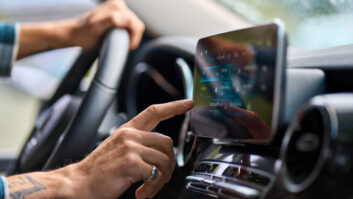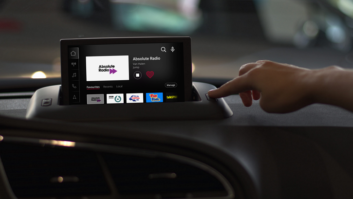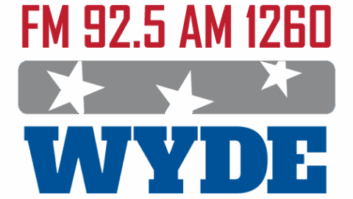Maintaining radio’s prominence in car dashboards is vital for social cohesion, as well as the continued economic health of the radio industry. These two messages were delivered during the final session of the WorldDAB Automotive 2024 conference, held last month in Prague, Czech Republic.
Titled, “Reinforcing broadcast radio’s dominance in the dashboard with DAB+,” the session’s speakers were Corinna Drumm, managing director of the Association of Austrian Private Broadcasters (VÖP) and Javier Sanchez, head of strategy for Radio Televisión Española’s RTVE Innovation Center.
They were in conversation with Hanns Wolter, DAB Italia’s technical director and chair of WorldDAB’s Spectrum and Network Implementation Committee. WorldDAB is the international association spearheading the adoption of the DAB digital radio transmission standard.
According to Drumm, “radio is the medium which offers the easiest access not only to entertainment but also to information.” In her comments, she said radio is the most trusted medium in society. “It is, together with TV, the most used source of news,” said Drumm. “This highlights the role of radio in our democratic societies and I think we have to be really aware of that. It’s not only about business; it’s not only about listening habits and expectations; it’s also about social cohesion and our democratic stability.

When referencing critics who presume radio to be nothing more than a source for music, Drumm speaks to the medium’s versatility.
“Seventy-five percent of the people in Austria listen to the radio every day, and the average usage time is almost three and a half hours,” she said. “That makes you come across news a couple of times a day. So I think, for our democratic society, which is really threatened currently by platforms which disseminate disinformation, this makes the role of radio even more important than before.”
Addressing the gathered audience, Drumm said radio is also superior to streaming due to its wider terrestrial coverage (compared to wireless data services) and lack of cost to the automotive listener. “You just cannot be sure that you have streaming coverage wherever you go, especially outside of urban areas,” said Drumm. “There is also the cost issue. If you’re lucky, you don’t have to pay as a driver for the data that you use, but that can easily change.”
If radio’s dashboard dominance is only good for society and listeners, it is also vital to the radio industry,
In his comments, Sanchez said keeping radio’s place in the car dash is vital to the health of the industry. “If radio goes out of the car, radio [as a business] will disappear directly,” he warned. “For instance, for the commercial sector in Spain, the revenues of advertisements will reduce dramatically if they are not in the car.”
Sanchez said radio broadcasters want to be able to thrive in the streaming world; however, he said there is no guarantee that their efforts will prove successful. “I don’t know anything about the future because we don’t have a crystal ball, yet,” he quipped.
In her closing statements, Drumm said in-car broadcast radio remains a simpler-to-use medium than streaming audio, which still matters to many motorists. “It’s just easy,” she said. “You don’t have to muddle through some platforms, where you don’t find your station, and you get to the wrong station with the right name but in the wrong destination and so on. With radio, you just push on ‘Radio’ and then there is your radio choice.”
[Related: “How Do We Maintain DAB+ Radio’s Prominence in the Car?“]







